3D Shapes Teaching Resources
Teach 3D shapes with ease using printable worksheets, digital teaching tools, hands-on games and much more from Teach Starter’s extensive collection of three-dimensional shape resources!
This collection of curriculum-aligned teaching resources has been created by Teach Starter’s expert team of teachers to make planning easier for teachers just like you! Familiarize students with 3D shapes and their properties using an extensive range of practical, hands-on and easy-to-implement teaching and learning materials.
Designed to cater to a range of ability levels, our differentiated and editable activities are bound to excite your students as they engage with the important mathematical topic.
Need a refresher on 3D shapes before delving into this concept with your students? Read on for a guide to all things three-dimensional from our experienced teacher team, including a kid-friendly way to explain these shapes and some common examples.
What Are 3D Shapes? A Kid-Friendly Definition
Looking for a simple way to describe 3D shapes to your students? Here's a helpful definition from our teacher team:
These are shapes that have three dimensions: length, width and depth. They differ from 2D shapes, which only have two dimensions (length and width).
The other key difference between two-dimensional shapes and three-dimensional objects is that 3D objects have volume. Volume refers to the amount of space inside the 3D object.
What Are the Properties of 3D Shapes?
In addition to learning the correct mathematical names of the 3D shapes they are familiar with (more on that later!), students in elementary school are taught that these objects have specific properties. The properties of three-dimensional objects are their faces, edges and vertices. The number of faces, edges and vertices varies from one 3D shape to another.
Faces
A face on a three-dimensional shape is any flat surface on the outside of the object with straight edges. The square base on a square-based pyramid is an example of a face.
Edges
An edge refers to the straight line that is formed when two faces of a 3D shape meet. Using the previous example of the square-based pyramid, this 3D shape has four edges around the base. These edges occur where the square face at the bottom of the pyramid meets the triangular faces that make up the sides of the pyramid.
Vertices
A vertex on a 3D shape is any point where two edges meet. Another word commonly used as a synonym for vertice is ‘corner.’ Returning to our square-based pyramid, this 3D shape has four vertices at the base, and one at the very top where the edges of the four triangular faces meet.
What Are Some Examples of 3D Shapes?
Most kids are familiar with the overarching concept of a 3D shape. After all, these objects are to be found everywhere in our immediate environments! Think of household items such as books, soda cans, boxes of cereal, balls and so on. But do they know the mathematical names of these familiar objects? Some students may, but the vast majority probably don't!
That is why teachers must explicitly teach the mathematical names of these familiar objects.
Here are some of the more common 3D shapes your students will encounter during their primary school education:
Prism
Prisms are 3D objects that have the same 2D shape at each end. The sides that connect these end faces together are rectangular. Prisms are named after their cross-section. The cross-section of a prism is the shape that is made by cutting vertically down through the object. For example, a prism with a triangular cross-section is called a triangular prism.

Rectangular prisms are common 3D shapes found in the real world and in math class!
Sphere
A sphere is a ball-shaped 3D object. It is perfectly symmetrical. A sphere has one curved surface. It has no faces, edges or vertices.
Pyramids
Pyramids are 3D objects with triangular sides that meet together at the top (called the apex). The base of a pyramid can be any 2D shape, and this shape gives the pyramid its name.
For example, a pyramid with a hexagon as its base is called a hexagonal pyramid.

When a pyramid has a square base, this 3D shape is called a square pyramid, like the image above.
Cone
Don't be fooled... a cone may look a little like a pyramid, but it is a 3D object in its own right! A cone has a circular base and one curved surface that tapers to a single point (the apex). The apex sits directly above the centre of the base circle.
Cylinder
A cylinder is a 3D object similar to a soda can. It has two identical ends which are circular in shape. One curved surface joins the two circular ends together.
Do 3D Shapes Have Lines of Symmetry?
Good question! When exploring two-dimensional shapes, students are taught about lines of symmetry: imaginary lines that divide a shape into two equal halves that are an exact reflection of each other. When exploring 3D objects, it seems natural that the concept of symmetry may crop up!
Unlike their two-dimensional counterparts, three-dimensional objects do not have lines of symmetry. It is important for students to understand that because they have depth (as well as length and width), three-dimensional objects cannot be made symmetrical using a single line. It takes multiple lines that form a 2D shape to create what is called a "plane of symmetry" within a 3D object.
What Are 3D Shape Nets?
One highly effective way to teach your students about the properties of 3D shapes is to have them construct their own 3D models using nets. These nets are essentially a flattened-out version of a 3D shape that can be cut out, folded and adhered together to create a model of that particular 3D shape.
Best of all, 3D nets are great teaching tools to help students understand the properties of these shapes, as they can see and count the faces, edges and vertices with greater ease and accuracy.
- Plus Plan
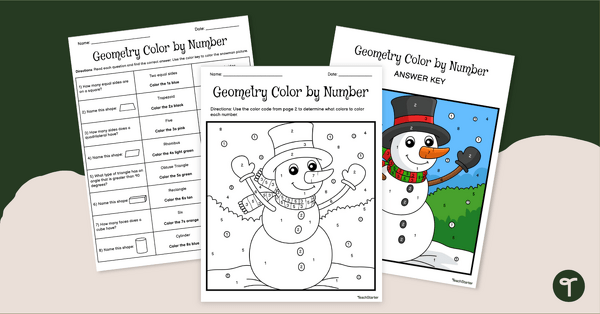
Color by Number Christmas - Geometry Worksheet
Use a Color by Number Christmas Geometry worksheet to practice classifying 2D and 3D shapes.
- Plus Plan
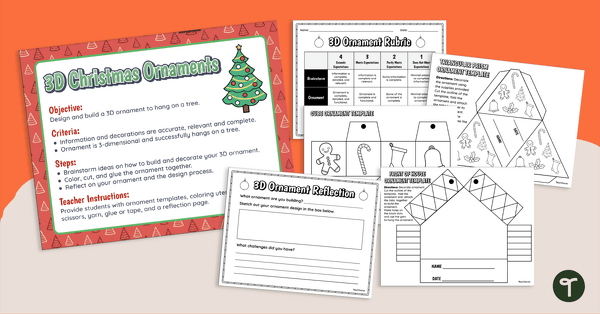
3D Christmas Ornaments Printable - STEM Challenge
Challenge your students to make three-dimensional paper Christmas ornaments with a STEM challenge.
- Free Plan
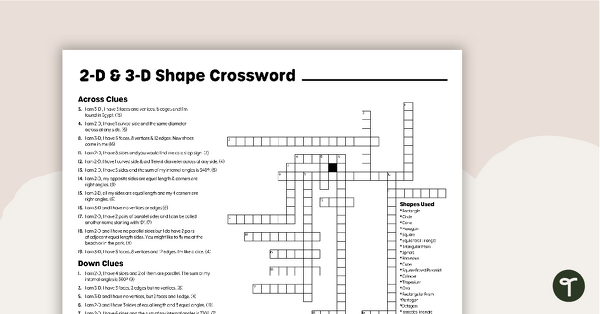
2D and 3D Shapes Crossword with Solution
A crossword with clues for both 2D and 3D shapes.
- Plus Plan

3rd Grade Geometry Christmas Game- Classifying Shapes
Identify 2D and 3D shapes and their attributes with an exciting Christmas Geometry Game!
- Free Plan
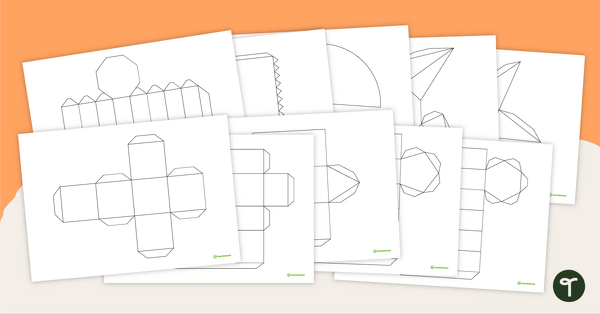
Nets of 3D Shapes
Create a variety of 3D shapes with this comprehensive set of net templates.
- Plus Plan
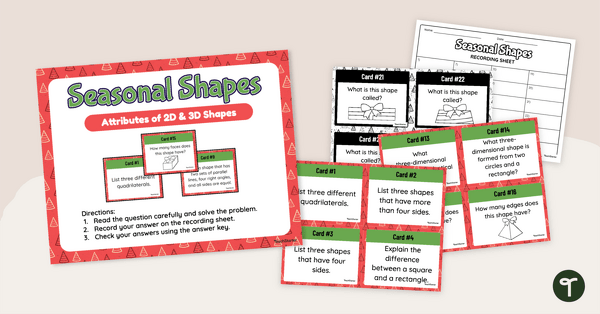
Christmas Math Tasks - Attributes of Shapes Activity
Combine Christmas and math with these 2D and 3D Shape Christmas Math Review Task Cards.
- Plus Plan

Classifying and Sorting 3D Shapes Worksheet
Practice classifying and sorting 3D shapes based on their attributes with this set of 3 worksheets.
- Plus Plan

3D Shapes Math Investigation - Make Me a Radical Robot!
Relate knowledge of 3D shapes to the real world with this student-led mathematics project.
- Plus Plan
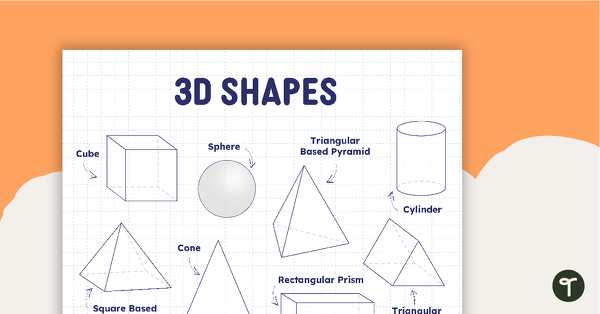
3D Shapes Anchor Chart
Learn the names of some common 3D shapes with this classroom anchor chart.
- Free Plan

Building 3D Shapes With Blocks Activity
Download this building 3D shapes activity for an engaging way to increase your students' spatial sense and 3D modeling abilities.
- Plus Plan

Spatial Reasoning Worksheets
Share these spatial reasoning worksheets with your students to help them master spatial relationship and composite shape standards.
- Plus Plan
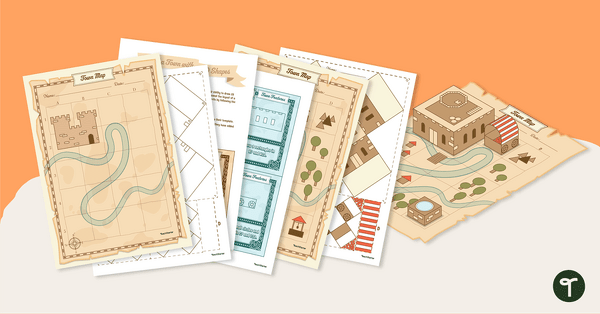
Ye Olde Geometry Town Project
Build a charming medieval town with our Ye Olde Geometry Town project, designed to give your students engaging hands-on practice with multiple geometry and social studies standards.
- Plus Plan
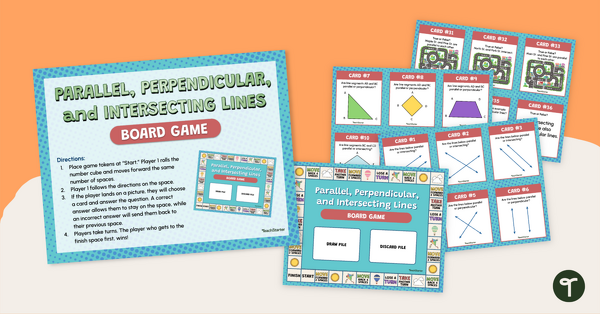
Perpendicular and Parallel Lines Activity — Board Game
Play this perpendicular and parallel lines activity with your students to give them practice identifying line types in a variety of settings.
- Plus Plan
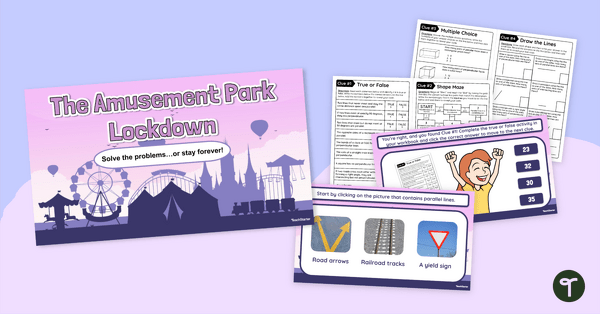
Parallel and Perpendicular Lines Activity — Escape Room
Engage your students with this parallel and perpendicular lines activity that encourages cooperation and problem solving to escape!
- Plus Plan
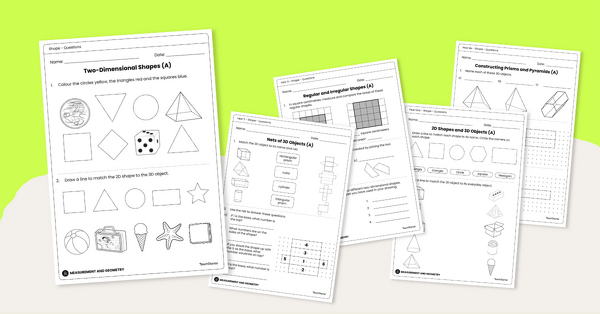
Shape Worksheet Sets (Kindergarten to 6th Grade Level)
Use these leveled worksheets sets with your elementary school students to explore 2D shapes and 3D shapes!
- Plus Plan
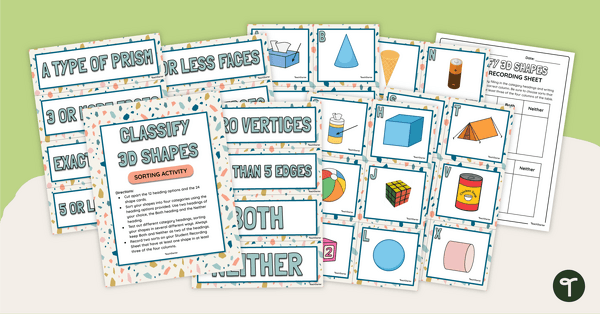
Classifying 3D Shapes Sorting Activity
Play this sorting game when learning how to classify 3D shapes according to their properties.
- Plus Plan
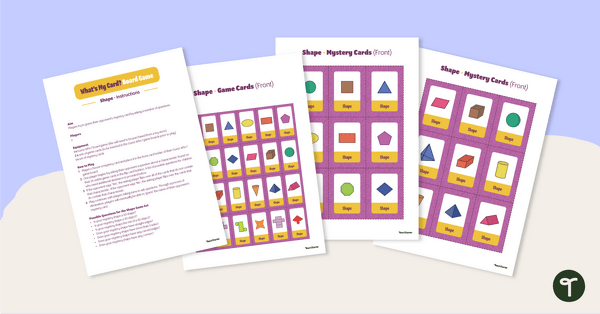
What's My Card? Shape Board Game
Consolidate knowledge of 2d shapes and 3D objects with a game of shape Guess Who!
- Plus Plan
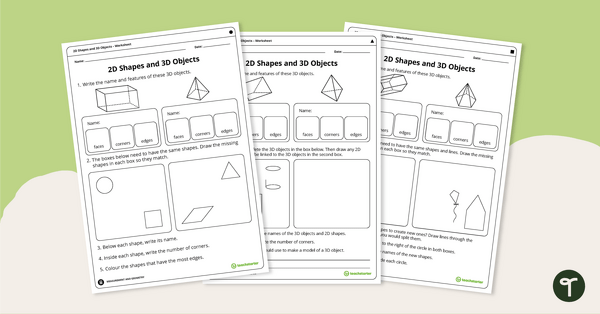
2D Shapes and 3D Objects – Worksheets
Focus on drawing 2D shapes and describing 3D objects with this set of differentiated worksheets.
- Plus Plan
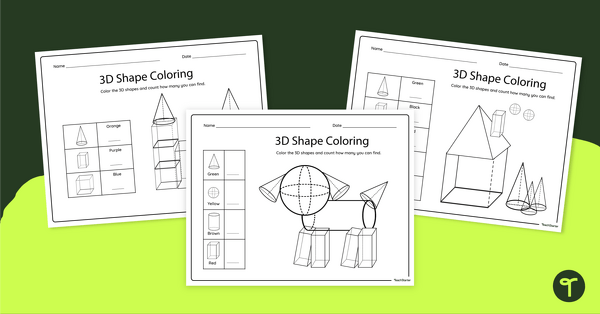
Count and Color by 3D Shapes - Worksheet
Practice identifying 3D objects with a code-based coloring task!
- Plus Plan
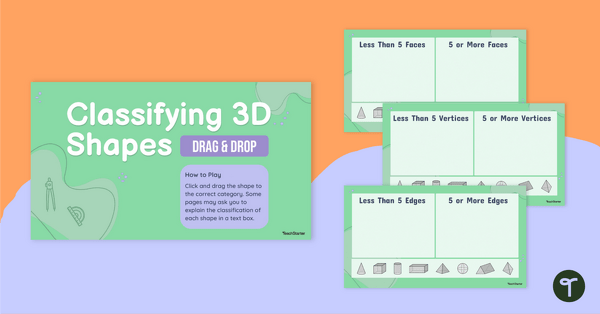
Classifying 3D Shapes - Interactive Activity
Classify 3D shapes according to their properties with this digital drag-and-drop activity.
- Plus Plan
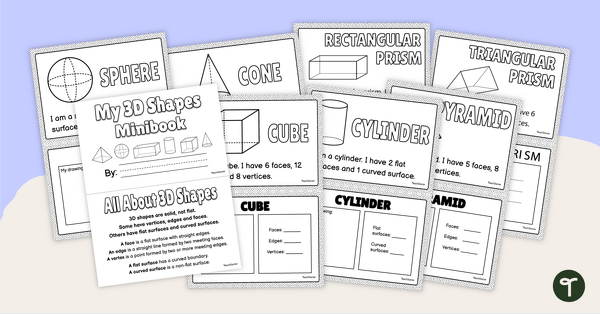
My 3D Shape Mini-Book
Explore the properties of some common three-dimensional shapes with this printable mini-book.
- Free Plan
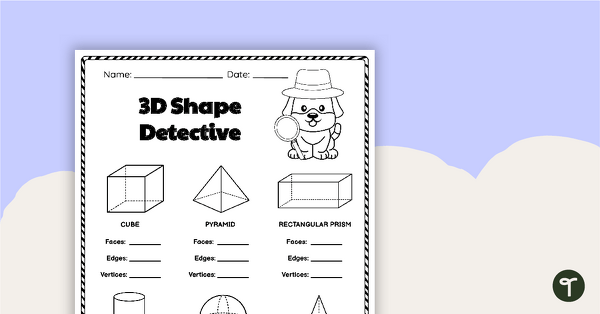
3D Shape Detective - Worksheet
Explore the properties of some common three-dimensional shapes with this printable worksheet.
- Plus Plan

Properties of 3D Shapes - Poster Set
Help your students identify the names and properties of common 3D shapes with this set of five classroom posters.
- Plus Plan
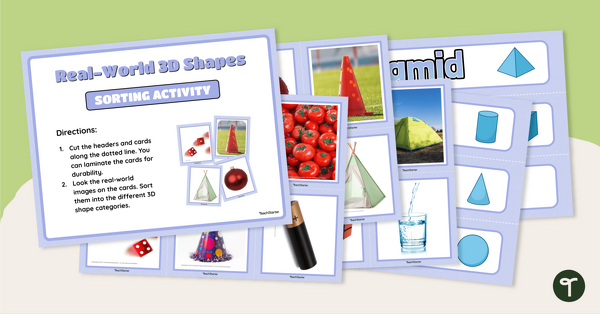
Real-World 3D Shapes - Sorting Activity
Practice identifying and sorting three-dimensional shapes with this set of 24 sorting cards.
- Free Plan
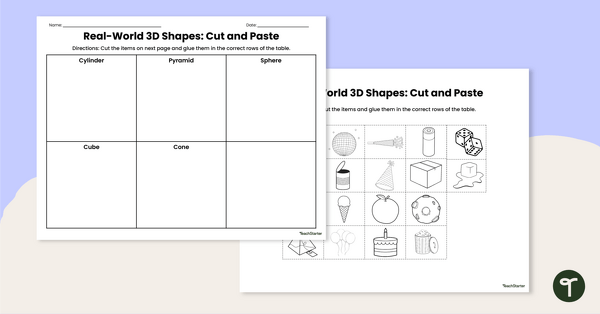
Real-World 3D Shapes - Cut and Paste Worksheet
Explore three-dimensional shapes in the real world with this cut-and-paste worksheet.
- Plus Plan
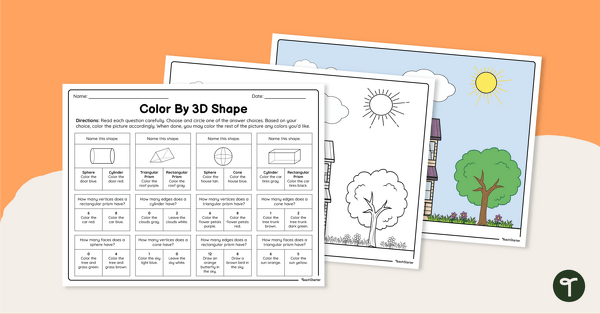
Color By 3D Shapes - Worksheet
Practice identifying 3D shapes and their attributes with a code-based coloring task!
- Plus Plan
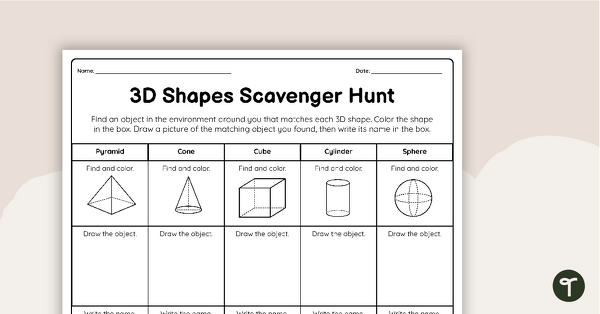
3D Shapes Scavenger Hunt — Kindergarten Math Worksheet
Discover three-dimensional shapes in the real world with a scavenger hunt math worksheet for kindergarten.
- Plus Plan
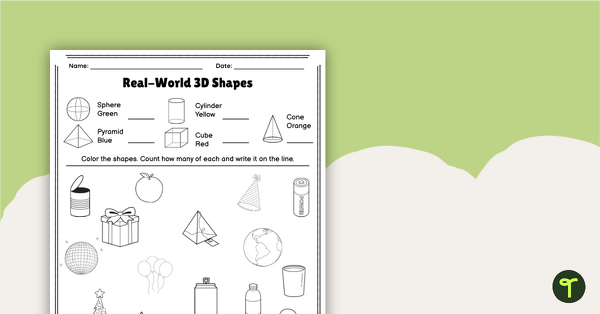
Real-World 3D Shapes - Coloring Worksheet
Explore three-dimensional shapes in the real world with this coloring worksheet.
- Plus Plan
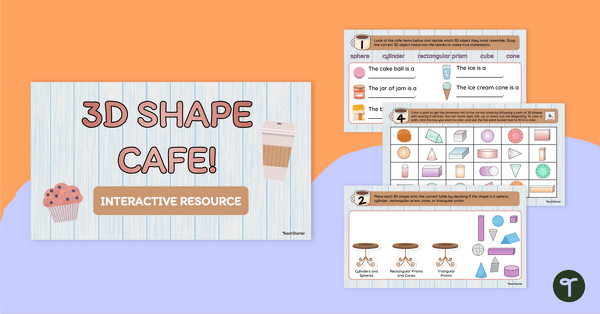
3D Shapes Cafe- Interactive Activity
Practice identifying 3D shapes and their properties in multiple ways with this engaging interactive activity.
- Plus Plan
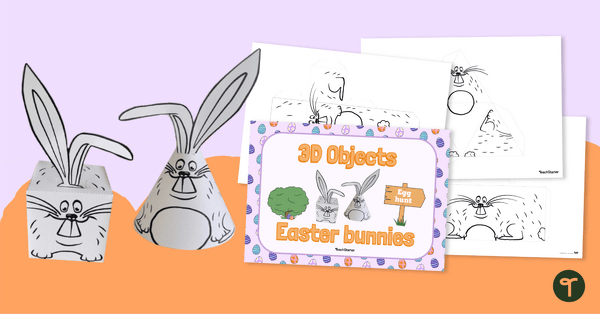
3D Easter Bunny Templates
A set of ten 3D Easter bunny templates.
- Plus Plan
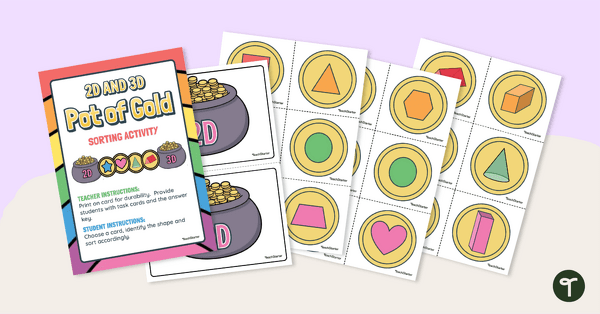
Pot of Gold Sort - 2D and 3D Shapes
Sort coins that feature 2D shapes and 3D objects into their corresponding pots with a St. Patricks Day theme!
- Plus Plan
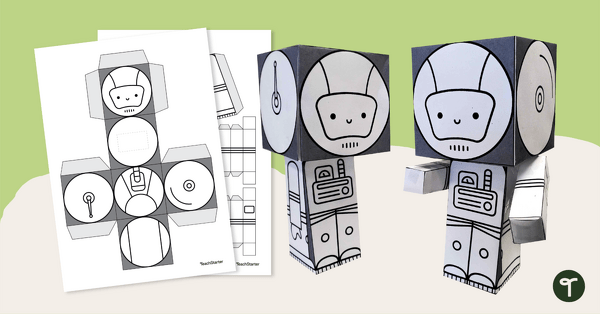
3D Astronaut Template
Create astronauts with this 3D net.